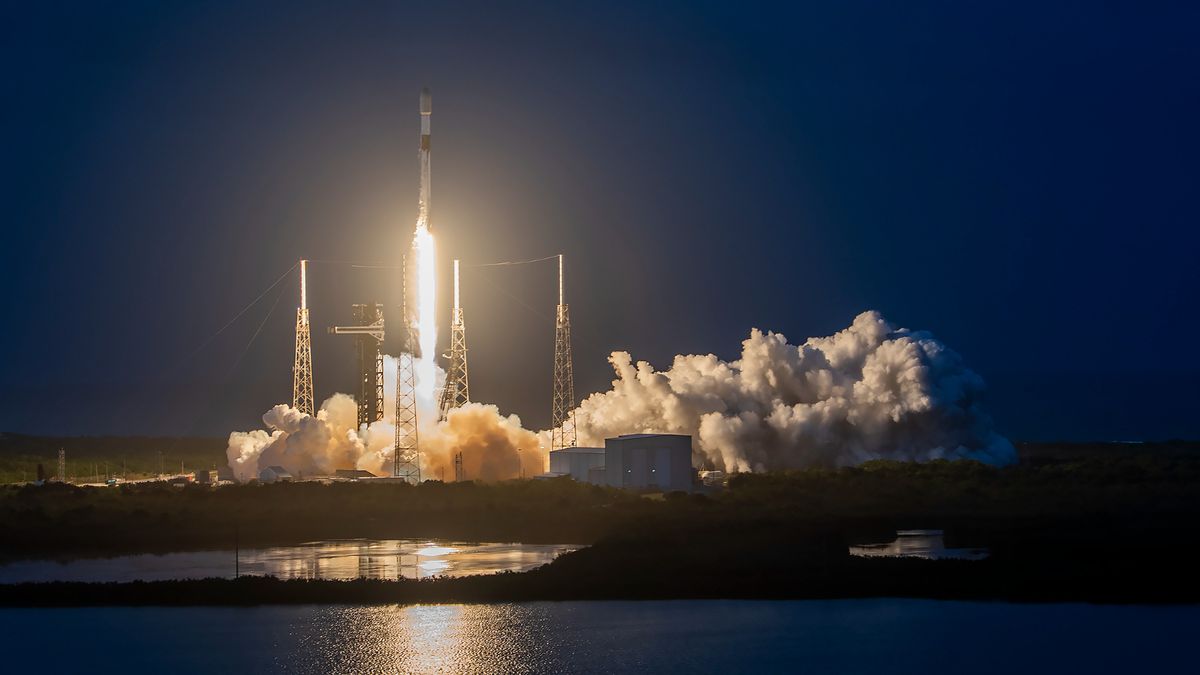Boeing’s Preparation for Starliner Spacecraft Launch
Boeing’s first Starliner spacecraft designated for astronauts has undergone a brief road journey today, April 16, in anticipation of its scheduled launch in early May. The Starliner was transported on a trailer to the United Launch Alliance (ULA) Atlas V rocket around 5 a.m. EDT (0900 GMT) in preparation for its upcoming mission to the International Space Station (ISS) set for no earlier than May 6. Onboard will be two seasoned NASA astronauts and former Navy test pilots, commander Barry “Butch” Wilmore and pilot Suni Williams.
Rollout Process
Earlier today, the Starliner emerged from NASA’s Kennedy Space Center (KSC) commercial crew and cargo processing facility near Orlando, Florida, and embarked on a 6-mile (10-kilometer) journey to reach its designated Atlas V rocket housed in a separate facility. Several astronauts were present to witness this historic journey which marked a significant milestone for the mission. The spacecraft’s final destination was ULA’s vertical integration facility at KSC, where it was united with the Atlas V rocket, a process that was successfully completed according to Boeing Space’s announcement on Twitter.
“Functionally, this rollout was similar in nature to previous rollouts,” stated Amanda Ireland, Boeing’s spacecraft liaison, emphasizing the meticulous care and attention to detail given to the spacecraft in the process. Once the stacking is finalized and communications are confirmed between the rocket and spacecraft, they will be jointly transported to the launch pad at KSC.
Significance of the Mission
The upcoming Crew Flight Test (CFT) mission, with a duration of approximately a week, aims to thoroughly assess all major systems onboard the Starliner with astronauts present. This mission follows two prior uncrewed Starliner flights: one in 2019 that failed to reach the ISS as planned, and another in 2022 that successfully reached the ISS after significant Starliner modifications were implemented.
Both the crew for the CFT mission and the anticipated first operational ISS mission in 2025 were present to witness the Starliner rollout. Astronauts slated for the initial operational mission, named Starliner-1, include NASA’s Scott Tingle, NASA’s Mike Fincke, and the Canadian Space Agency’s Joshua Kutryk. Also in attendance was Kimiya Yui, an astronaut from the Japan Aerospace Exploration Agency (JAXA) who is currently unassigned for a spaceflight.
Technical Challenges and Preparedness
The CFT mission has faced several delays in recent years due to various technical issues, including those discovered in 2023. Challenges included issues with Starliner’s main parachute suspension lines, which were found to have a lower load capacity than initially anticipated, as well as concerns regarding the spacecraft’s wiring composition.
Despite these obstacles, Boeing, NASA, and the Starliner astronauts have expressed confidence that the spacecraft is now equipped to transport crews successfully. The CFT mission will serve as a comprehensive systems check to certify the Starliner for extended missions lasting six months or longer, such as standard ISS crew rotations.
Commercial Crew Contracts
Boeing and SpaceX secured contracts from NASA in 2014 for commercial crew missions to the ISS. Boeing’s contract for the Starliner is valued at $4.2 billion, while SpaceX’s contract amounts to $2.6 billion. SpaceX initiated operational astronaut missions using the Crew Dragon spacecraft in 2020 and has since facilitated 11 crew missions to the ISS.
Prior to SpaceX’s operational commercial crew flights, NASA relied on Russia’s Soyuz spacecraft following the retirement of the Space Shuttle program in 2011. NASA continues to utilize Soyuz for certain astronaut missions due to technical and policy considerations.
Image/Photo credit: source url





